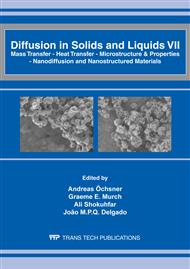p.1
p.12
p.18
p.24
p.29
p.35
p.43
p.48
p.54
Evaluation of the Use of Solids Waste Generated in the Activities of Exploration as Adsorbents for Treatment of Oil Derivatives
Abstract:
Currently, the biggest concern of different industries is the disposal of waste generated. The liquid effluents in general have more elaborate studies realizing alternatives for their treatment by reducing their toxicity or changing specifications for a return to the process, an internal recycling or even studying alternatives for recycling outside. In the case of solid waste, there are many papers on reuse. In general, the studies involve alternatives to reduce the possible toxicity and subsequent disposal. In some cases, the studies dealt with the residue already involve their use as material for construction (bricks). This work aims to evaluate two types of waste, namely, the drilling mud to clay-based generated by the activity of exploration and exploitation of oil and solid waste generated in the production process and catalyst for fluid catalytic cracking plant. In both cases, is currently the destination for industrial landfills, and the generating unit has to bear all expenses related to material handling. Our purpose in studying this waste, will initially study the temperature profiles. The dry material being ground and with a pre-determined size will be tested for physical-chemical, such as X-ray fluorescence (XRF) to see the composition and ASAP to analyze the surface area and pore volume. With this material treated in bench tests will be performed to assess the capability of removing nitrogen and sulfur contaminants in lighter fractions of petroleum. Preliminary tests with the industrial base of sorbent clay and zeolite showed a good result. These tests serve as a basis for comparison with material obtained in the laboratory.
Info:
Periodical:
Pages:
29-34
Citation:
Online since:
April 2012
Authors:
Keywords:
Price:
Сopyright:
© 2012 Trans Tech Publications Ltd. All Rights Reserved
Share:
Citation:


